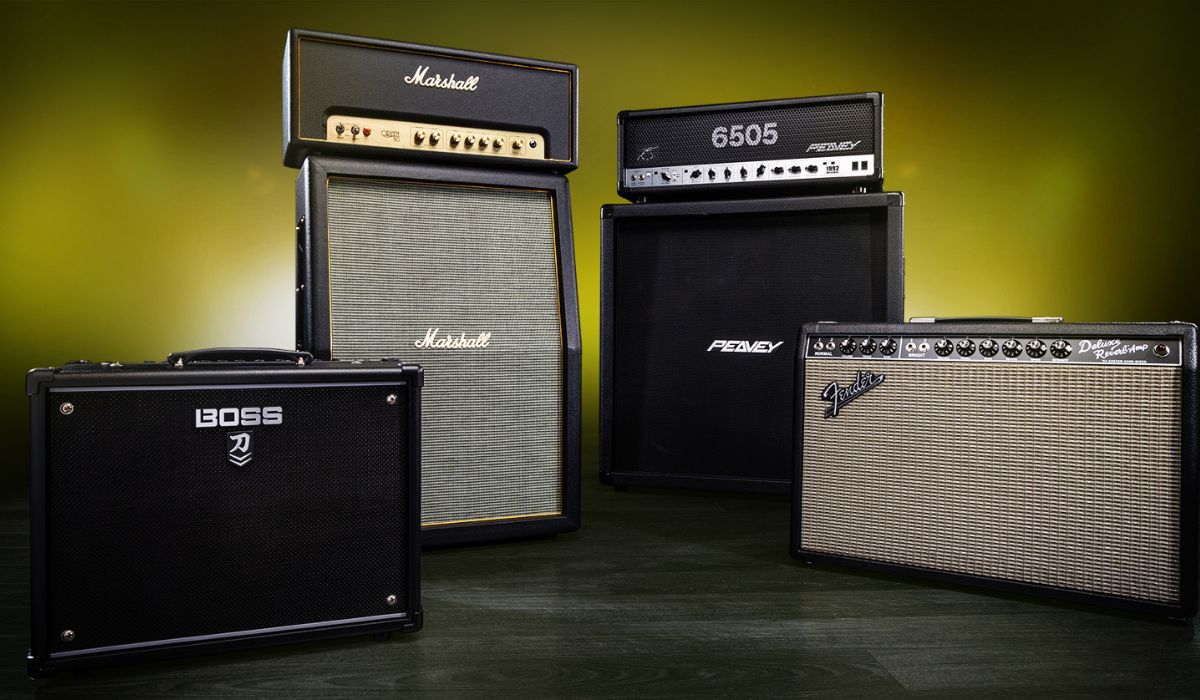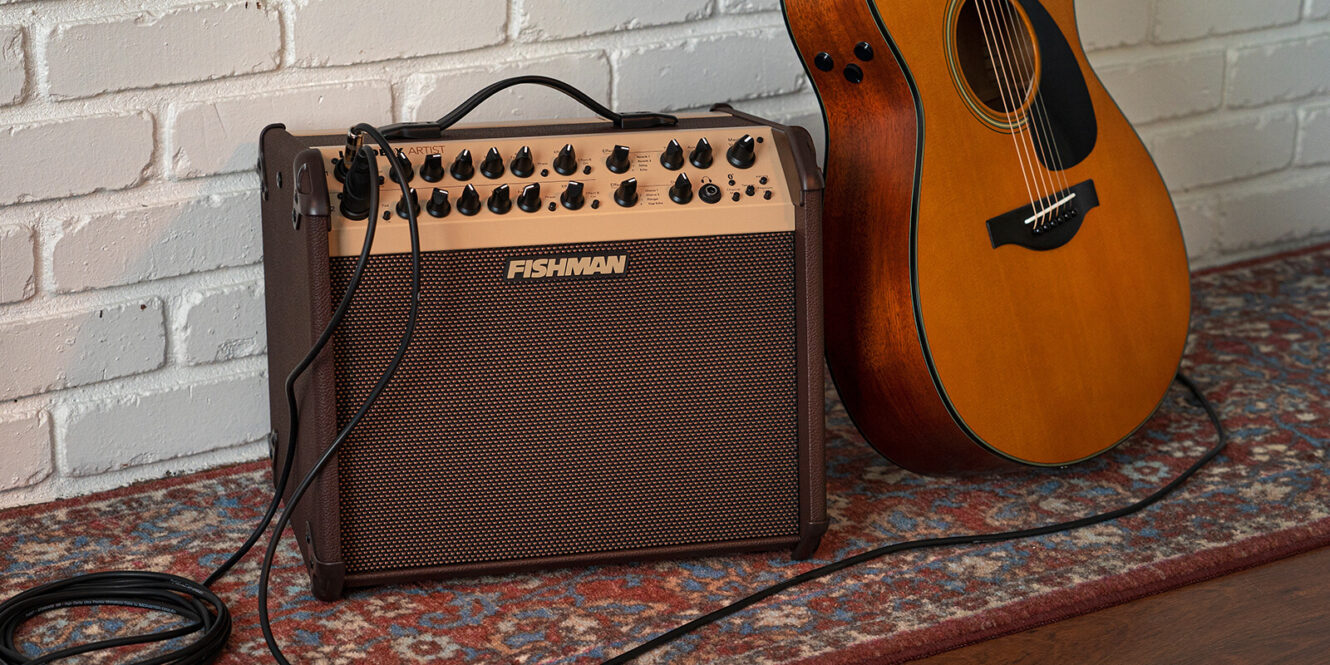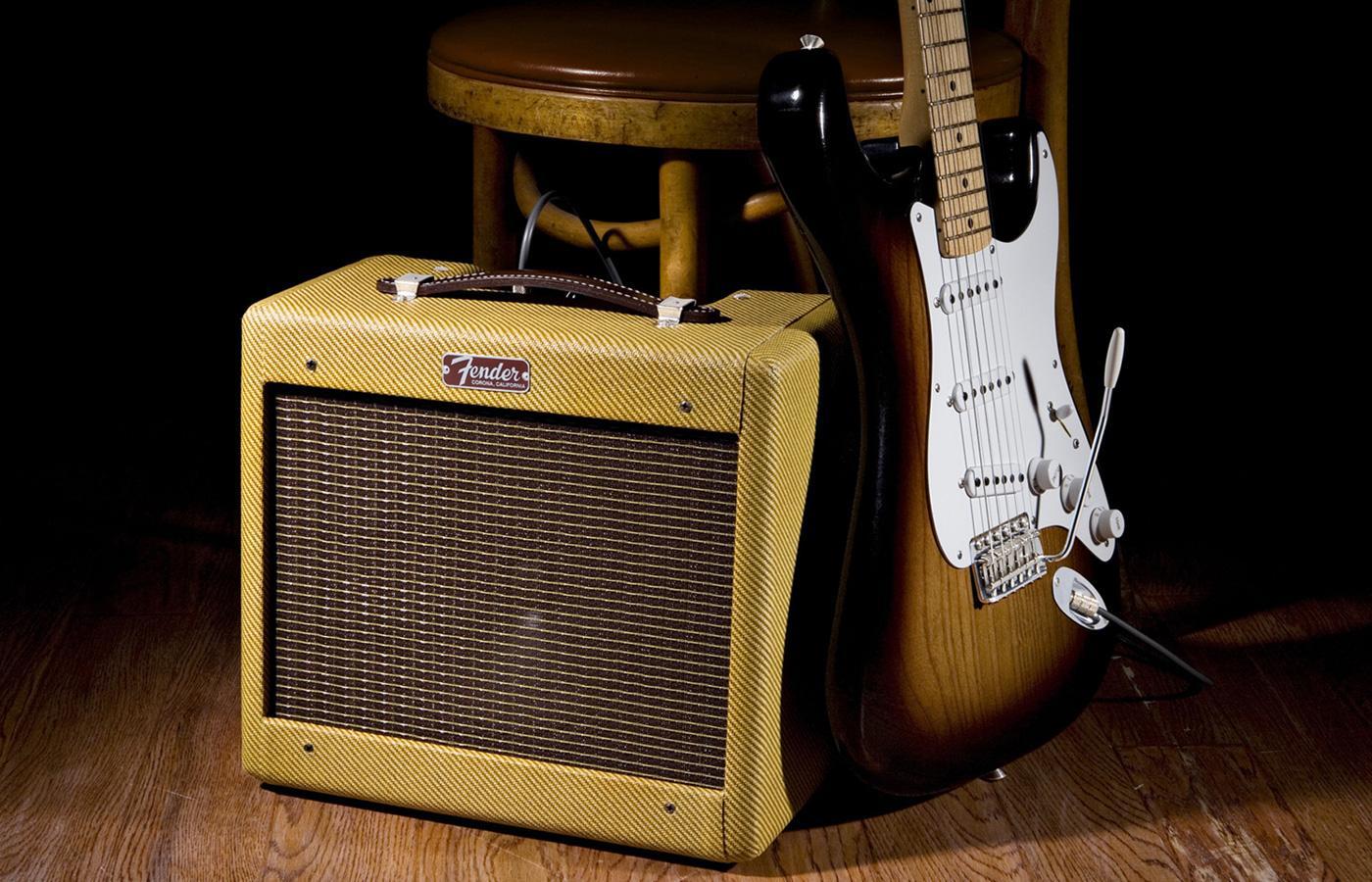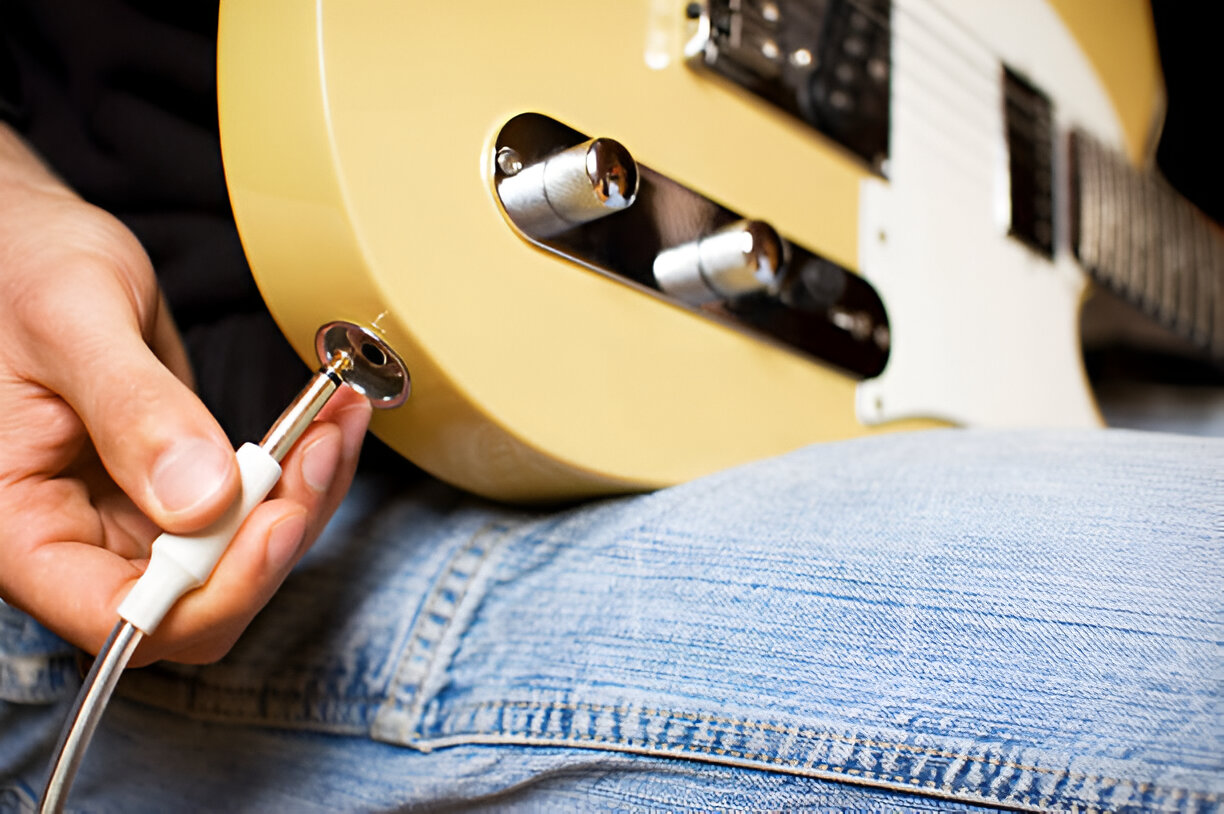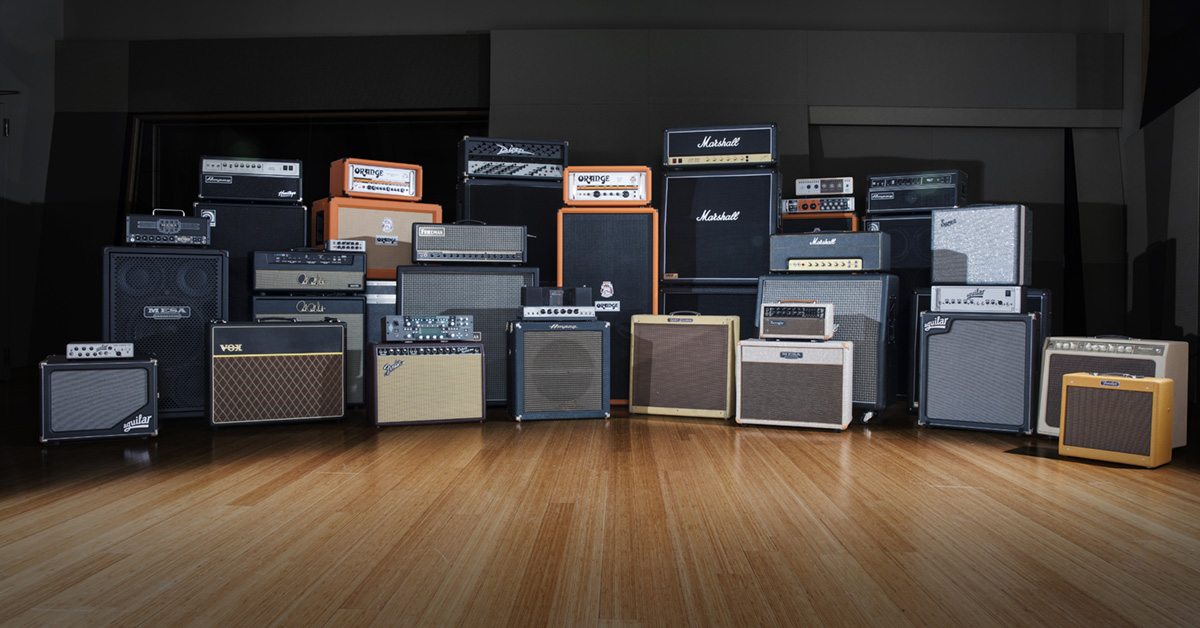Introduction
When it comes to playing the electric guitar, the choice of amplifier plays a crucial role in shaping the sound and overall experience. With a myriad of options available, selecting the best amp for an electric guitar can be a daunting task for both beginners and experienced musicians. Understanding the nuances of different amplifier types, features, and setups is essential to make an informed decision that aligns with your musical preferences and performance requirements.
In this comprehensive guide, we will delve into the various types of electric guitar amplifiers, including tube amps, solid-state amps, and modeling amps. We will also explore the differences between combo amps and head and cabinet setups, shedding light on the advantages and drawbacks of each configuration. Additionally, we will discuss the significance of wattage and speaker size, as well as the choice between built-in effects and pedalboard setups. By the end of this guide, you will have a clear understanding of the factors to consider when choosing the best amplifier for your electric guitar, empowering you to make a well-informed and satisfying purchase.
Whether you are a blues enthusiast, a rock aficionado, or a jazz virtuoso, the amplifier you select can significantly impact your sonic identity and playing experience. By navigating through the intricacies of amplifier types and features, you can unlock the true potential of your electric guitar, unleashing an array of captivating tones and textures that resonate with your musical vision. Let's embark on this enlightening journey to discover the perfect amplifier that will elevate your sonic prowess and inspire your musical endeavors.
Tube Amps
Tube amplifiers, also known as valve amps, have been a cornerstone of electric guitar amplification since the early days of rock and roll. Renowned for their warm, organic sound and responsive dynamics, tube amps utilize vacuum tubes to amplify the guitar signal. These amplifiers are revered for their rich harmonic content and natural compression, delivering a classic tonal character that has stood the test of time.
One of the defining characteristics of tube amps is their tonal versatility, which ranges from pristine cleans to harmonically rich overdriven tones. The inherent warmth and smooth saturation of tube distortion have made these amplifiers a top choice for many guitarists, particularly those seeking a vintage or classic rock sound. Additionally, tube amps exhibit a dynamic responsiveness to playing dynamics, allowing for expressive control over the instrument’s nuances.
While tube amps are celebrated for their sonic qualities, they do come with some considerations. These amplifiers tend to be heavier and more fragile than their solid-state counterparts, requiring attentive care and maintenance. Moreover, tube amps often demand higher volume levels to achieve their optimal tonal characteristics, which may not be suitable for all performance environments.
Despite these considerations, the allure of tube amps persists, drawing in guitarists who seek the timeless sound and feel that these amplifiers offer. Whether it’s the iconic breakup of a cranked tube amp or the lush, shimmering cleans that emanate from its circuitry, the allure of tube amplifiers continues to captivate musicians and audiences alike.
Solid-State Amps
Solid-state amplifiers have carved a significant niche in the realm of electric guitar amplification, offering a diverse array of tones and features that cater to the needs of modern guitarists. Unlike tube amps, solid-state amplifiers employ semiconductor circuitry to amplify the guitar signal, resulting in a distinct sonic profile that appeals to a wide spectrum of musical styles and preferences.
One of the hallmark traits of solid-state amps is their reliability and durability. By eschewing the delicate vacuum tubes found in tube amps, solid-state amplifiers are generally more resilient and lightweight, making them well-suited for gigging musicians who require portability and ruggedness. Additionally, solid-state amps often feature built-in effects, such as reverbs, delays, and modulation effects, providing a convenient all-in-one solution for shaping and enhancing the guitar’s sound.
Another compelling aspect of solid-state amplifiers is their ability to deliver consistent and pristine clean tones at any volume level. This attribute makes them ideal for genres that necessitate crystalline articulation and precision, such as jazz and fusion. Furthermore, solid-state amps can produce high-gain distortion with tight low-end response, making them a popular choice for metal and hard rock guitarists seeking aggressive and articulate overdriven tones.
While solid-state amps have garnered acclaim for their reliability and versatility, some purists argue that they may lack the harmonic complexity and organic feel of tube amps. However, advancements in solid-state technology have led to the development of amplifiers that emulate the responsiveness and tonal characteristics of tube amps, blurring the lines between the two categories and expanding the sonic palette available to guitarists.
Ultimately, solid-state amplifiers offer a compelling blend of reliability, versatility, and sonic innovation, appealing to musicians who seek a modern and adaptable platform for expressing their musical vision. Whether it’s the pristine cleans, searing high-gain tones, or the convenience of integrated effects, solid-state amps continue to evolve and inspire players across diverse genres and playing styles.
Modeling Amps
Modeling amplifiers represent a groundbreaking convergence of technology and sonic versatility, offering an expansive palette of tones that can emulate a wide range of classic and modern amplifiers, as well as effects. These innovative amps utilize digital signal processing to recreate the sonic characteristics of various amplifiers, enabling guitarists to access a diverse array of tones within a single unit.
One of the primary attractions of modeling amps is their ability to replicate the sonic nuances of iconic amplifiers from different eras and manufacturers. Whether it’s the chime of a vintage British combo, the raw power of an American high-gain stack, or the shimmering cleans of a boutique tube amp, modeling amplifiers can authentically reproduce these tonal profiles with remarkable fidelity. Additionally, modeling amps often incorporate a selection of onboard effects, including reverbs, delays, modulation effects, and more, further expanding the sonic possibilities at the guitarist’s disposal.
Furthermore, modeling amps offer unparalleled convenience and flexibility, allowing players to switch between diverse amp models and effects with the tap of a footswitch or the twist of a knob. This versatility makes modeling amplifiers an appealing choice for musicians who require a wide range of tones for studio recording, live performance, or practice sessions without the need for multiple amplifiers and effects pedals.
While modeling amps have gained traction for their versatility and convenience, some purists argue that they may lack the tactile responsiveness and harmonic complexity of traditional tube amps. However, advancements in modeling technology continue to bridge this gap, with many modern modeling amps offering dynamic and expressive responses that rival their analog counterparts.
Ultimately, modeling amplifiers represent a compelling fusion of vintage tonal authenticity and modern convenience, empowering guitarists to explore an expansive sonic landscape without the constraints of traditional amplifier and effects configurations. Whether it’s the ability to summon a spectrum of classic tones or the convenience of an all-in-one tone solution, modeling amps continue to redefine the possibilities for guitarists across genres and musical pursuits.
Combo Amps vs. Head and Cabinet Setups
When considering an electric guitar amplifier, one of the fundamental decisions revolves around choosing between a combo amp or a head and cabinet setup. Each configuration offers distinct advantages and considerations, catering to the preferences and requirements of different guitarists.
Combo amps, which integrate the amplifier and speaker within a single unit, are prized for their portability and convenience. These all-in-one solutions are well-suited for smaller venues, practice spaces, and studio environments where space and setup time are factors to consider. Additionally, combo amps often feature a streamlined control layout, making them user-friendly and accessible for musicians who prioritize simplicity and ease of use.
On the other hand, head and cabinet setups provide a modular approach, allowing guitarists to mix and match amplifier heads with different speaker cabinets to achieve a tailored sonic character. This flexibility enables players to experiment with various speaker configurations, sizes, and tonal characteristics, customizing their sound to suit specific venues, musical styles, and sonic preferences. Furthermore, head and cabinet setups offer scalability, as the amplifier head can be used with different cabinets to accommodate diverse performance scenarios.
Another consideration when comparing combo amps and head and cabinet setups is the potential for speaker upgrades and replacements. With a head and cabinet configuration, guitarists have the option to swap out speakers to fine-tune their tone, experiment with different speaker types, or replace damaged speakers without replacing the entire amplifier. This modularity can be advantageous for players who seek a tailored and evolving sonic palette.
While combo amps and head and cabinet setups present distinct advantages, the choice between the two ultimately hinges on the guitarist’s preferences, performance requirements, and sonic aspirations. Whether it’s the convenience and portability of a combo amp or the modular flexibility of a head and cabinet setup, both configurations offer compelling solutions for amplifying the electric guitar and shaping its sonic identity.
Wattage and Speaker Size
When selecting an electric guitar amplifier, understanding the relationship between wattage and speaker size is crucial for achieving the desired sonic performance and suitability for different playing environments. The wattage of an amplifier and the size of its speakers significantly influence its volume, headroom, and tonal characteristics, making these considerations paramount for guitarists seeking the ideal amplifier for their musical pursuits.
Amplifier wattage plays a pivotal role in determining the overall volume and headroom of the amplifier. Higher wattage amplifiers generally deliver greater headroom, allowing for cleaner tones at higher volumes before reaching the onset of distortion. This attribute can be advantageous for genres that demand pristine cleans and ample headroom, such as jazz and country. Conversely, lower wattage amplifiers often exhibit earlier breakup and compression, making them well-suited for achieving overdriven tones at lower volume levels, a desirable trait for recording and smaller performance spaces.
Speaker size, expressed in inches, also influences the tonal response and projection of an amplifier. Larger speakers, such as 12-inch or 15-inch models, tend to produce fuller low-end response and enhanced bass articulation, making them favorable for genres that necessitate robust and defined low-frequency reproduction, such as blues and rock. In contrast, smaller speakers, such as 8-inch or 10-inch models, offer a tighter and more focused midrange and high-frequency response, ideal for genres that require punchy and articulate projection, such as funk and pop.
It’s important to note that the combination of wattage and speaker size contributes to the overall tonal character and sonic footprint of an amplifier. For instance, a high-wattage amplifier paired with larger speakers can deliver expansive headroom and robust low-end response, making it suitable for larger venues and genres that demand ample volume and low-frequency projection. Conversely, a low-wattage amplifier with smaller speakers may excel in recording and intimate performance settings, providing responsive breakup and focused midrange articulation.
Ultimately, the interplay between amplifier wattage and speaker size offers a spectrum of tonal possibilities and performance considerations, allowing guitarists to tailor their amplifier choice to their specific playing environments, sonic preferences, and musical genres. By understanding the impact of wattage and speaker size, guitarists can make informed decisions that align with their sonic aspirations and performance requirements.
Built-in Effects vs. Pedalboard
When exploring the realm of electric guitar amplification, the choice between built-in effects and a pedalboard represents a pivotal decision that significantly shapes a guitarist’s sonic toolkit and creative possibilities. Amplifiers equipped with built-in effects offer a convenient all-in-one solution, integrating a variety of effects such as reverb, delay, modulation, and overdrive within the amplifier itself. Conversely, utilizing a pedalboard involves an external array of individual effects pedals that can be customized and arranged to suit the guitarist’s specific tonal and expressive requirements.
Amplifiers with built-in effects provide a streamlined and compact platform for accessing a range of tonal enhancements without the need for additional external gear. This convenience can be particularly advantageous for players who prioritize simplicity and efficiency in their setup, such as gigging musicians who require a swift and hassle-free solution for achieving diverse tonal textures. Additionally, built-in effects can be integrated seamlessly with the amplifier’s controls, allowing for intuitive manipulation and real-time adjustment of effect parameters.
On the other hand, utilizing a pedalboard offers unparalleled flexibility and customization, empowering guitarists to curate a personalized array of effects pedals that align with their sonic vision and playing style. This modular approach enables players to mix and match individual pedals, experiment with signal chain configurations, and achieve a tailored sonic palette that reflects their artistic identity. Moreover, pedalboards facilitate precise control over individual effects, providing nuanced expression and sonic exploration.
While amplifiers with built-in effects offer convenience and integration, some players may prefer the sonic characteristics and flexibility of standalone effects pedals. Individual pedals often feature specialized circuitry and tonal nuances that cater to specific sonic requirements, allowing for a level of sonic precision and customization that may not be fully replicated in built-in effects. Additionally, the ability to swap out and experiment with different pedals enables players to continually evolve and refine their sonic arsenal.
Ultimately, the choice between built-in effects and a pedalboard hinges on the guitarist’s preferences, performance requirements, and sonic aspirations. Whether it’s the convenience and integration of built-in effects or the flexibility and customization of a pedalboard, both approaches offer compelling solutions for sculpting a diverse and expressive sonic palette that resonates with the player’s artistic vision.
Conclusion
Choosing the best amplifier for an electric guitar is a multifaceted endeavor that involves navigating a diverse landscape of amplifier types, features, and configurations. From the classic warmth of tube amps to the modern versatility of modeling amps, each amplifier category offers unique sonic characteristics and performance considerations that cater to the needs and preferences of different guitarists.
As guitarists embark on the quest for their ideal amplifier, factors such as tonal preferences, playing environments, and sonic aspirations come into play, guiding the decision-making process toward an amplifier that resonates with their musical identity. Whether it’s the pristine cleans and responsive dynamics of a tube amp, the reliability and versatility of a solid-state amp, or the expansive tonal palette of a modeling amp, the amplifier choice holds the potential to shape a guitarist’s sonic journey and creative expression.
Furthermore, considerations such as combo amps versus head and cabinet setups, wattage and speaker size, and the choice between built-in effects and a pedalboard contribute to the nuanced decisions that define a guitarist’s sonic toolkit. Each of these elements offers unique advantages and considerations, empowering guitarists to tailor their amplifier setup to suit diverse performance scenarios, musical genres, and sonic explorations.
Ultimately, the journey toward finding the best amplifier for an electric guitar is a deeply personal and rewarding pursuit, characterized by sonic discovery, creative expression, and the quest for the perfect tonal identity. By understanding the nuances of amplifier types, features, and setups, guitarists can make informed decisions that align with their musical vision, unlocking a world of captivating tones and sonic textures that inspire and elevate their playing experience.
Whether it’s the timeless allure of vintage tube amp tones, the modern innovation of solid-state and modeling amps, or the sonic possibilities offered by diverse effects and pedalboard configurations, the world of electric guitar amplification is rich with sonic diversity and creative potential. As guitarists embark on their sonic odyssey, the perfect amplifier becomes not just a tool, but a conduit for artistic expression and sonic exploration, shaping the musical narrative and leaving an indelible imprint on the listener’s ears and the player’s soul.







